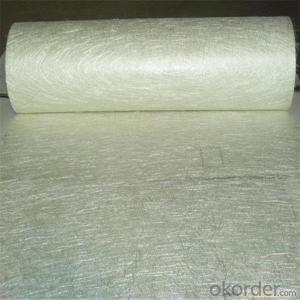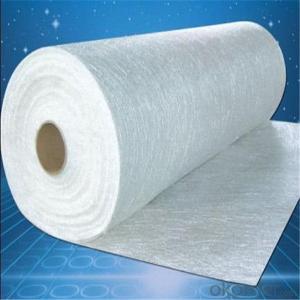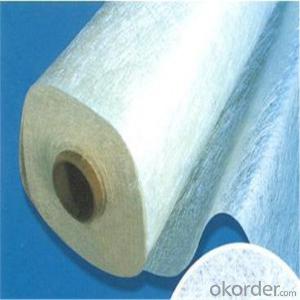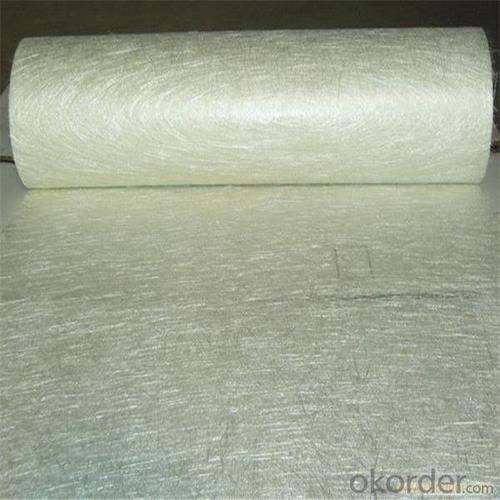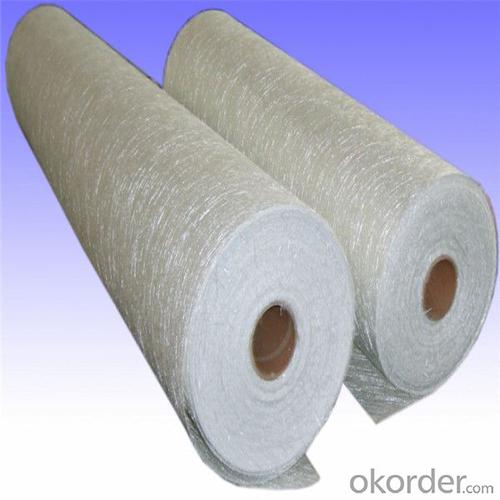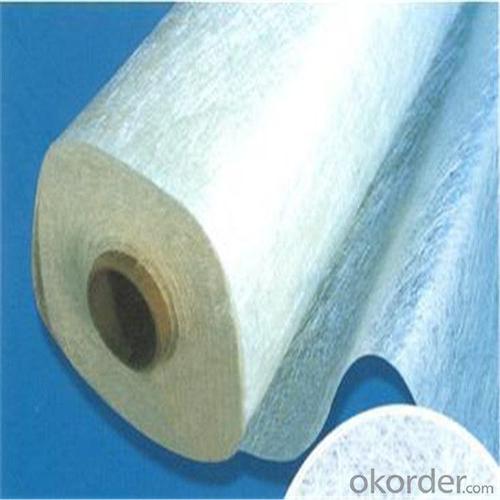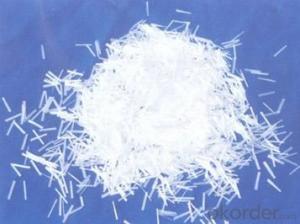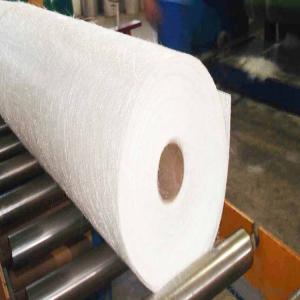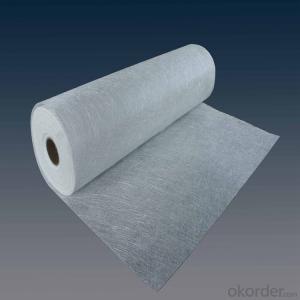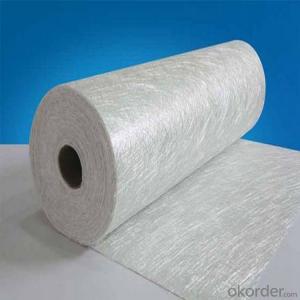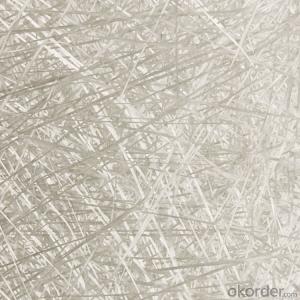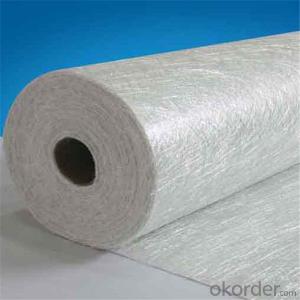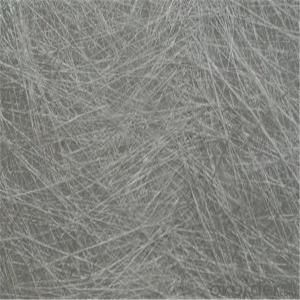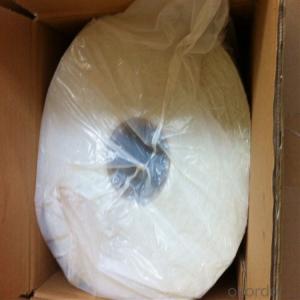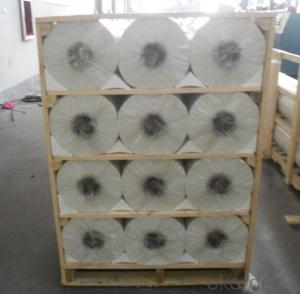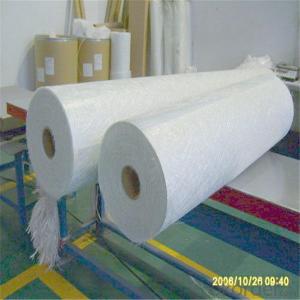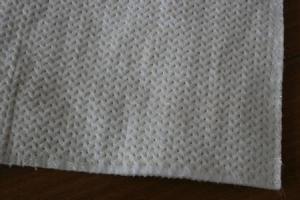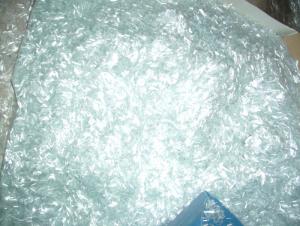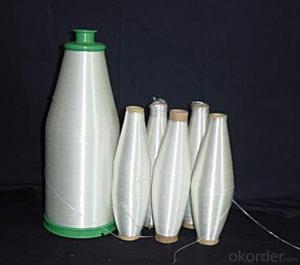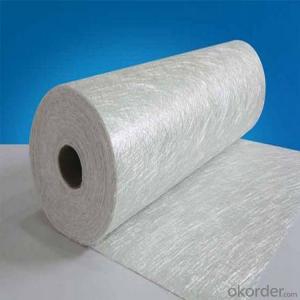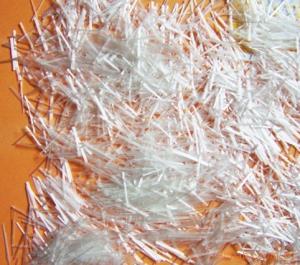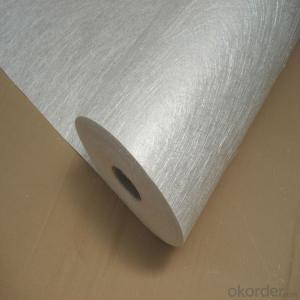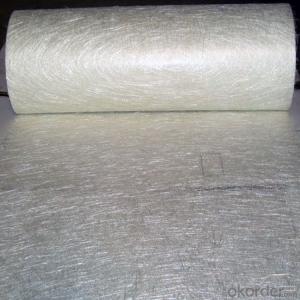Fiberglass Chopped Strands Stand Mat for Pp Panel Factory
- Loading Port:
- Tianjin
- Payment Terms:
- TT OR LC
- Min Order Qty:
- 100 m.t.
- Supply Capability:
- 20000 m.t./month
OKorder Service Pledge
Quality Product, Order Online Tracking, Timely Delivery
OKorder Financial Service
Credit Rating, Credit Services, Credit Purchasing
You Might Also Like
Quick Details
| Technique: | Chopped Strand Fiberglass Mat (CSM) | Dimensions: | 450gsm | Mat Type: | Continuous Filament Mat |
| Fiberglass Type: | E-Glass | Softness: | softness | Place of Origin: | Jiangxi, China (Mainland) |
| Brand Name: | cnbm | Model Number: | 450gsm | color: | white |
| fiberglass type: | E glass | product: | e-glass powder chopped stand mats | binder: | powder or emulsion |
| width: | 1040 or 1270mm, as your requirement | weight: | 30 or 45kg/roll | paper tube diameter: | 90mm |
| outer diameter of roll: | 256mm | packing: | plastic film+carton box + pallet |
Packaging & Delivery
| Packaging Details: | plastic film+carton box + pallet |
| Delivery Detail: | 15-20days |
Specifications
1.e-glass powder chopped stand mats
2.binder:power or emulsion
3.width:1040mm or 1270mm
4.weight:450gsm
Picture
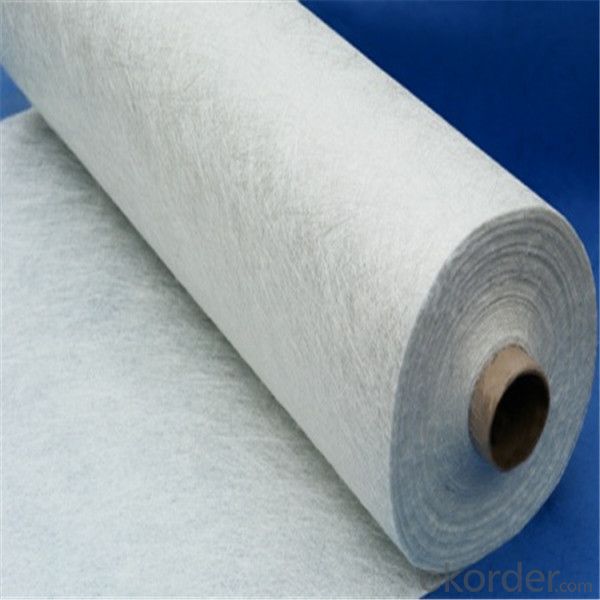
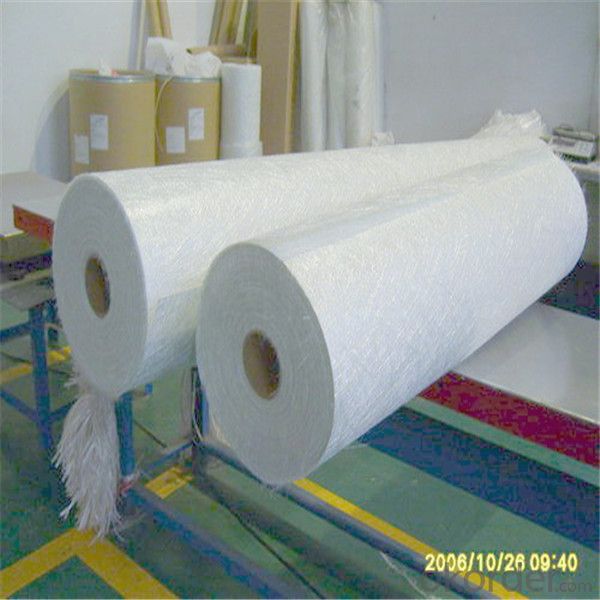
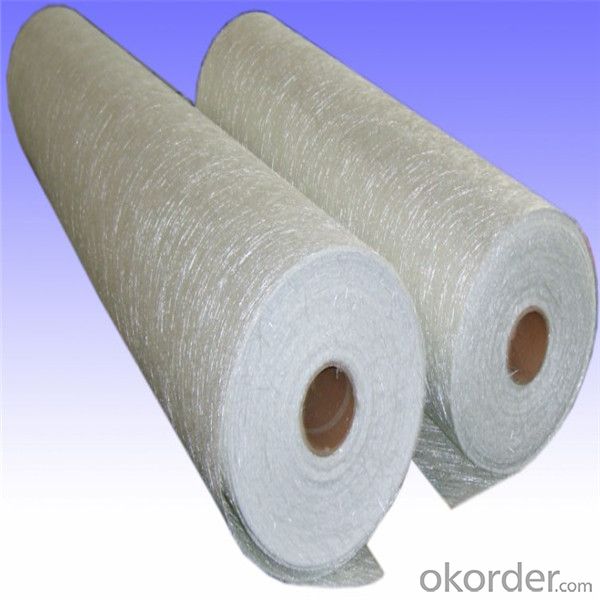
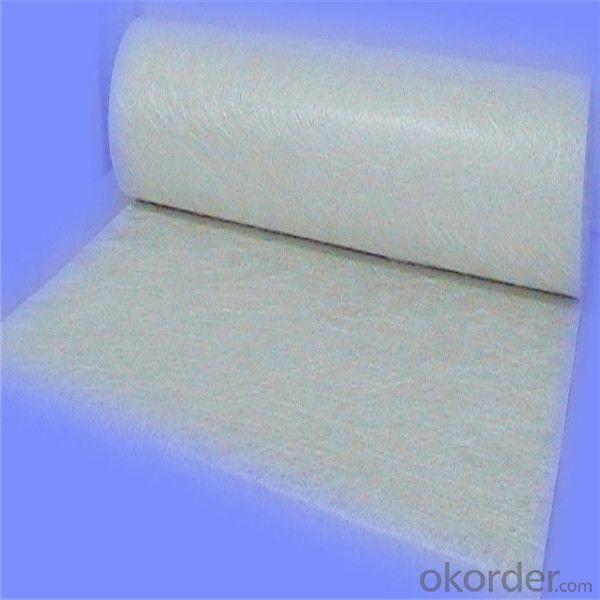
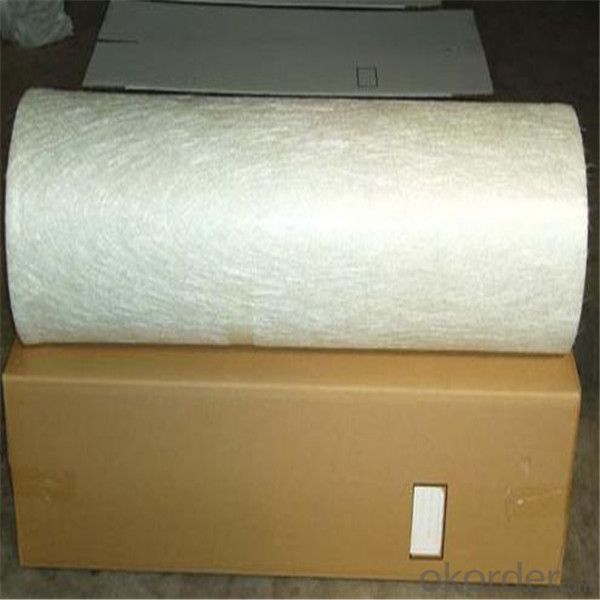
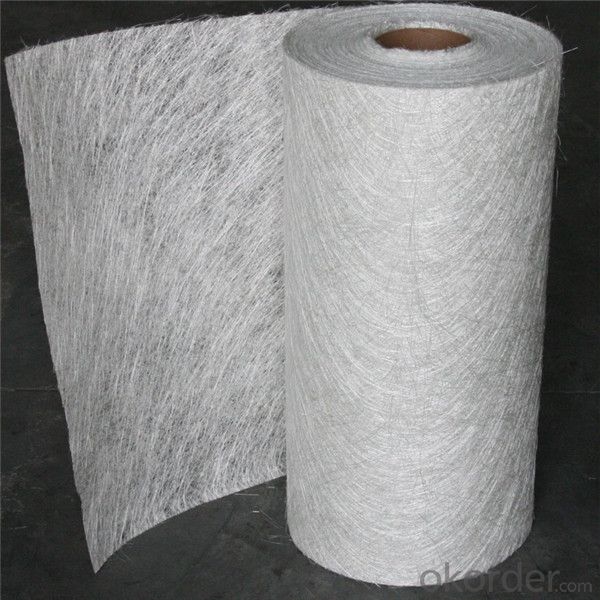
- Q: Aluminum paste carbon fiber glass fiber pulp slurry canoeing and what is the difference between what are the benefits of
- Carbon fiber solid material, high tensile strength, light weight and good quality, but the impact resistance and less expensive; glass fiber material in the performance was not as good as carbon fiber, but also tensile stretch, good durability, light weight, moderate price; aluminum elasticity is relatively poor, but the price is cheaper.
- Q: Can fiberglass chopped strand be used in insulation applications?
- Indeed, insulation applications can make use of fiberglass chopped strand. Due to its exceptional thermal resistance properties, fiberglass chopped strand is frequently employed as a material for insulation. Its structure adeptly captures air pockets, effectively diminishing heat transfer and sustaining a consistent temperature within the insulated area. Moreover, the lightweight, durable, and moisture-resistant nature of fiberglass chopped strand insulation renders it appropriate for various insulation needs. Whether it is for residential structures, commercial establishments, or industrial facilities, fiberglass chopped strand insulation offers a reliable solution for thermal insulation demands.
- Q: What are the adhesion properties of fiberglass chopped strand?
- The adhesion properties of fiberglass chopped strand can vary depending on several factors. Firstly, the type of resin or binder used to bind the strands together plays a significant role in determining the adhesion properties. Fiberglass chopped strand is often used in combination with various resins such as polyester, epoxy, or vinyl ester, and the adhesion between the strands and the resin is crucial for the overall strength and performance of the composite. Additionally, the surface treatment of the fiberglass chopped strand can also affect its adhesion properties. Surface treatments such as silane coupling agents or sizing agents are commonly applied to improve the bonding between the fiberglass and the resin. These treatments create chemical bonds between the strands and the resin, enhancing the adhesion strength. Furthermore, the length and diameter of the chopped strands can also impact the adhesion properties. Longer strands generally provide better mechanical interlocking with the resin, resulting in improved adhesion. Similarly, larger diameter strands tend to have more surface area for bonding, leading to increased adhesion strength. In summary, the adhesion properties of fiberglass chopped strand are influenced by the type of resin or binder used, the surface treatment applied, and the length and diameter of the strands. Proper selection and optimization of these factors can result in strong and durable adhesion between the fiberglass chopped strand and the resin, ensuring the desired performance of the composite material.
- Q: How does the fiber length distribution of fiberglass chopped strand affect the properties of composites?
- The properties of composites are greatly affected by the distribution of fiber length in fiberglass chopped strand. This material is commonly used as a reinforcement in composites, where it is combined with a matrix material like resin to create a composite structure. The fiber length distribution refers to the range of fiber lengths found in the chopped strand, which can vary depending on the manufacturing process. The fiber length distribution influences the properties of composites in several ways. The aspect ratio of the fibers, which is the ratio of fiber length to diameter, is particularly important in determining the mechanical properties of the composite. Fibers with a higher aspect ratio, meaning they are longer, tend to provide better reinforcement and enhance the strength and stiffness of the composite. This is because longer fibers have a larger surface area and can effectively transfer stress, resulting in improved load-bearing capacity. Additionally, the length distribution of fibers affects the bonding between the fibers and the matrix material. Longer fibers are more likely to form strong bonds with the matrix, leading to better load transfer and overall performance of the composite. Conversely, shorter fibers may not be long enough to establish strong bonds, resulting in reduced mechanical properties. Furthermore, the distribution of fiber length can impact the processing and manufacturing of composites. Longer fibers may be more challenging to process uniformly, making it difficult to achieve a homogeneous dispersion within the matrix. This uneven distribution of fibers can create weak spots or variations in the mechanical properties of the composite. To conclude, the fiber length distribution of fiberglass chopped strand significantly influences the properties of composites. It affects the reinforcement capability, bonding between fibers and matrix, and the processing characteristics of the composite. Manufacturers and designers must consider the desired mechanical properties and processing requirements when selecting the appropriate fiber length distribution for their composite applications.
- Q: What do glass fiber operating tools do?
- Drawing, drying, winding, fabric etc.
- Q: Can fiberglass chopped strand be used in the production of building facades?
- Yes, fiberglass chopped strand can be used in the production of building facades. Fiberglass chopped strand is a type of reinforcement material that is commonly used in construction applications. It is made up of small strands of fiberglass that are randomly chopped into shorter lengths. These chopped strands can be mixed with other materials, such as resins or cement, to create a composite material that is strong and durable. In the production of building facades, fiberglass chopped strand can be incorporated into various components, such as panels, sheets, or cladding. It provides additional strength and reinforcement to the facade, making it resistant to impact, weathering, and other external factors. The use of fiberglass chopped strand in building facades can also enhance the overall fire resistance and thermal insulation properties of the structure. Furthermore, fiberglass chopped strand is a lightweight material, which makes it easier to handle and install during the construction process. It can be easily molded or formed into different shapes and sizes, allowing for flexibility in design. Additionally, fiberglass chopped strand has excellent corrosion resistance, ensuring that the building facade will remain intact and aesthetically pleasing for a long time. Overall, the use of fiberglass chopped strand in the production of building facades offers numerous benefits, including enhanced strength, durability, fire resistance, thermal insulation, and design flexibility. It is a cost-effective and reliable solution that can contribute to the longevity and performance of the building facade.
- Q: How is fiberglass chopped strand used in the automotive industry?
- The automotive industry extensively utilizes fiberglass chopped strand for a variety of purposes, thanks to its unique characteristics and benefits. One of the primary applications of fiberglass chopped strand in this industry involves reinforcing plastic parts and components. By incorporating fiberglass chopped strand into plastic materials, the final product experiences significant improvements in strength, stiffness, and impact resistance. This reinforcement is crucial for ensuring the durability and safety of various automotive parts, including bumpers, dashboards, door panels, and interior trims. Moreover, fiberglass chopped strand finds utility in the automotive sector for sound insulation and vibration damping. The fibrous nature of fiberglass aids in the absorption and dissipation of noise and vibrations, resulting in a quieter and more comfortable driving experience for passengers. This is particularly important in reducing road and engine noise, thereby enhancing the overall enjoyment of driving. Furthermore, fiberglass chopped strand is employed in the production of composite materials, which are increasingly gaining popularity in the automotive industry. These composites, composed of fiberglass chopped strand and a resin matrix, possess exceptional strength-to-weight ratio, corrosion resistance, and design flexibility. They can be molded into intricate shapes, enabling the manufacturing of lightweight yet robust automotive parts, such as body panels, hoods, and roofs. In conclusion, fiberglass chopped strand plays a crucial role in the automotive industry by enhancing the strength, stiffness, impact resistance, and acoustic properties of various plastic components. Its usage not only improves the overall performance, safety, and comfort of vehicles but also enables the production of lightweight and durable parts through composite materials.
- Q: How does the toughness of the chopped strand affect its performance?
- The performance of the chopped strand is directly influenced by its toughness in several ways. Firstly, a higher level of toughness indicates a greater capability to withstand stress without breaking or failing. This means that a chopped strand with higher toughness can endure more strain or force before it fractures or tears. This is especially important in applications where the chopped strand experiences high levels of mechanical stress or impact, like in reinforced composites or structural components. Furthermore, the toughness of the chopped strand also affects its ability to maintain its integrity and mechanical properties over time. A higher level of toughness generally implies a superior ability to resist degradation or wear, ensuring that the chopped strand remains effective and reliable for a longer duration. This is of utmost importance in industries where durability and longevity are crucial factors, such as automotive, aerospace, or construction. Additionally, the toughness of the chopped strand can also impact its handling and processing characteristics. A higher level of toughness may make it more challenging to cut or manipulate the chopped strand during fabrication, necessitating specialized equipment or techniques. On the other hand, a lower level of toughness may make the chopped strand more susceptible to breakage or damage during handling, potentially leading to quality issues or decreased performance. To summarize, the performance of the chopped strand is directly influenced by its toughness, which determines its resistance to breakage, ability to maintain mechanical properties over time, and handling characteristics. Therefore, it is crucial to understand and optimize the toughness of the chopped strand to ensure its effectiveness and reliability in various applications.
- Q: Can fiberglass chopped strand be used in aerospace composites?
- Yes, fiberglass chopped strand can be used in aerospace composites. Fiberglass chopped strand is a common reinforcement material that is widely used in various industries, including aerospace. It offers excellent strength-to-weight ratio, chemical resistance, and thermal stability, making it suitable for aerospace applications where lightweight and high-performance materials are required. Fiberglass chopped strand can be used in the production of aerospace components such as panels, fairings, interior parts, and structural elements. It can be combined with other reinforcement materials, such as carbon fibers, to enhance the overall properties of the composite. However, it is important to note that the specific requirements and regulations of each aerospace project should be considered when selecting the appropriate reinforcement material.
- Q: What are the advantages of using fiberglass chopped strand in construction?
- There are several advantages of using fiberglass chopped strand in construction. Firstly, fiberglass chopped strand is known for its high strength-to-weight ratio. This means that it is strong and durable while being lightweight, making it an ideal material for construction applications. Its strength allows it to withstand heavy loads and stress, making it suitable for various structural components. Secondly, fiberglass chopped strand is highly corrosion-resistant. It does not rust or corrode like metals, making it a long-lasting material that can withstand harsh environmental conditions. This is particularly beneficial in construction where exposure to moisture, chemicals, and other corrosive elements is common. Additionally, fiberglass chopped strand is a versatile material that can be easily molded into various shapes and sizes. It can be used to create complex architectural designs and innovative structures. Its flexibility allows for custom fabrication, making it suitable for construction projects with unique requirements. Moreover, fiberglass chopped strand is an excellent insulator. It has low thermal conductivity, meaning it does not readily transfer heat. This makes it an effective material for insulation, keeping buildings cool in hot climates and reducing energy consumption for heating and cooling. Furthermore, fiberglass chopped strand is fire-resistant. It has a high melting point and does not catch fire easily. In the event of a fire, it can help contain the spread of flames and limit damage to the structure. Lastly, fiberglass chopped strand is cost-effective. While it may have a higher upfront cost compared to traditional materials, its durability, low maintenance requirements, and long lifespan make it a cost-efficient choice in the long run. It reduces the need for frequent repairs and replacements, saving both time and money. Overall, the advantages of using fiberglass chopped strand in construction include its high strength-to-weight ratio, corrosion resistance, versatility, insulation properties, fire resistance, and cost-effectiveness. These qualities make it an attractive option for various construction applications.
Send your message to us
Fiberglass Chopped Strands Stand Mat for Pp Panel Factory
- Loading Port:
- Tianjin
- Payment Terms:
- TT OR LC
- Min Order Qty:
- 100 m.t.
- Supply Capability:
- 20000 m.t./month
OKorder Service Pledge
Quality Product, Order Online Tracking, Timely Delivery
OKorder Financial Service
Credit Rating, Credit Services, Credit Purchasing
Similar products
Hot products
Hot Searches
Related keywords
